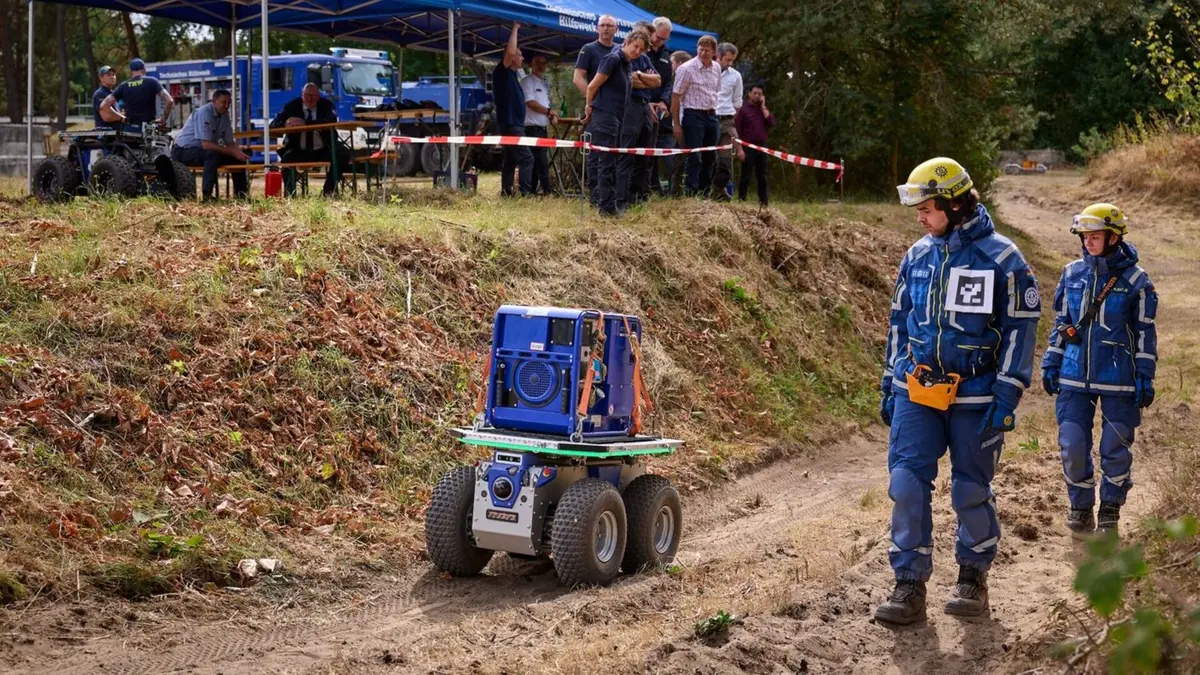By Futurist Thomas Frey
In a world where disasters strike without warning, the difference between life and death often relies on seconds. German engineers have now unveiled a robot explicitly engineered for disaster response—capable of entering rubble, traversing unstable terrain, sensing survivors, and operating autonomously or semi-autonomously under chaotic conditions. This isn’t just a better drone or remote tool—it’s the next generation of first responder.
Rescue robots have existed for decades—but they’ve always been handicapped by trade-offs: limited mobility, fragile sensors, weak decision logic, or dependence on constant human oversight. The new German design pushes those limits. It uses multi-modal sensing (lidar, thermal, acoustic), dynamic locomotion legs and tracks, built-in AI for pathfinding in shifting debris fields, and modular tools—cutters, cameras, medical deployers—swappable in the field.
Imagine an earthquake zone where no human can safely tread. The robot moves in, mapping collapsed structures, detecting weak voids, locating survivors, delivering first-aid kits or even small drones or med-dispensers. All while updating remote command posts in real time—no connectivity lost.
This shifts how we imagine disaster zones. Rather than waiting for rubble to be cleared before rescuers go in, robots will lead the way. They become the vanguard, reducing risk to human teams. Over the next decade, I foresee disaster response evolving into robot-human task teams, where the robot handles high-risk exploration while humans focus on strategy, medical care, and coordination.
The rise of these robots also nudges the economics of rescue. Insurance models may adjust when automated response becomes standard. Building codes may evolve to embed robot-friendly channels. Urban planning might include “robot corridors” for future emergency access.
We must also face the ethical dimension. When a robot signals a human in a precarious void, but deployment of human crews is still delayed, who bears the responsibility for survival decisions? And in conflicts, balance the line between rescue and reconnaissance.
By 2040, disaster zones may be increasingly silent. The roar of human hazard may yield to the whirr of robotic limbs mapping, sensing, aiding. The first step in disaster will no longer be the arrival of human responders—but the hum of machines leading that path.
Final Thoughts
The German disaster response robot is not just a tool—it is a signal that rescue itself is being redefined. The boundary of human action is retreating into the machines we build. In the future, saving lives won’t require sending humans into danger first. Instead, we’ll let machines lead, and people follow—safer, smarter, stronger.
Related reads:
- The Ocean Renaissance: Marine Life Rebounds 300% as Ghost Ships Eliminate Human Disruption
- Edge Computing Is Creating a New Industrial Nervous System


